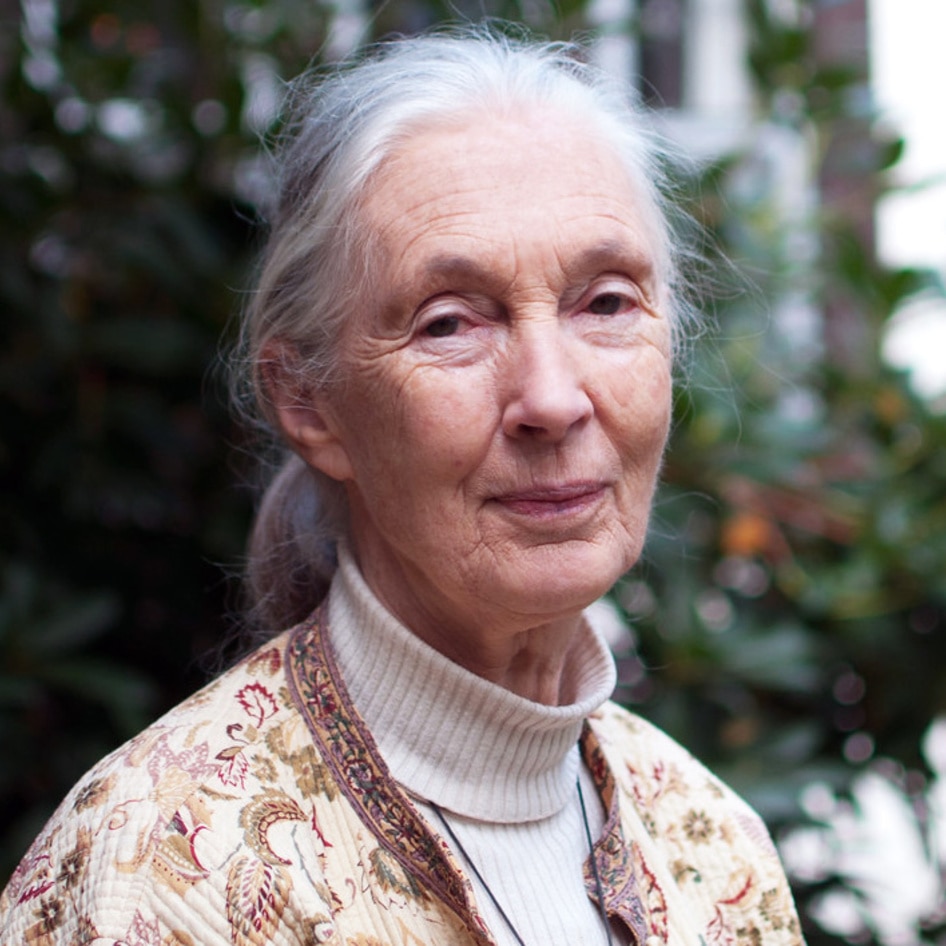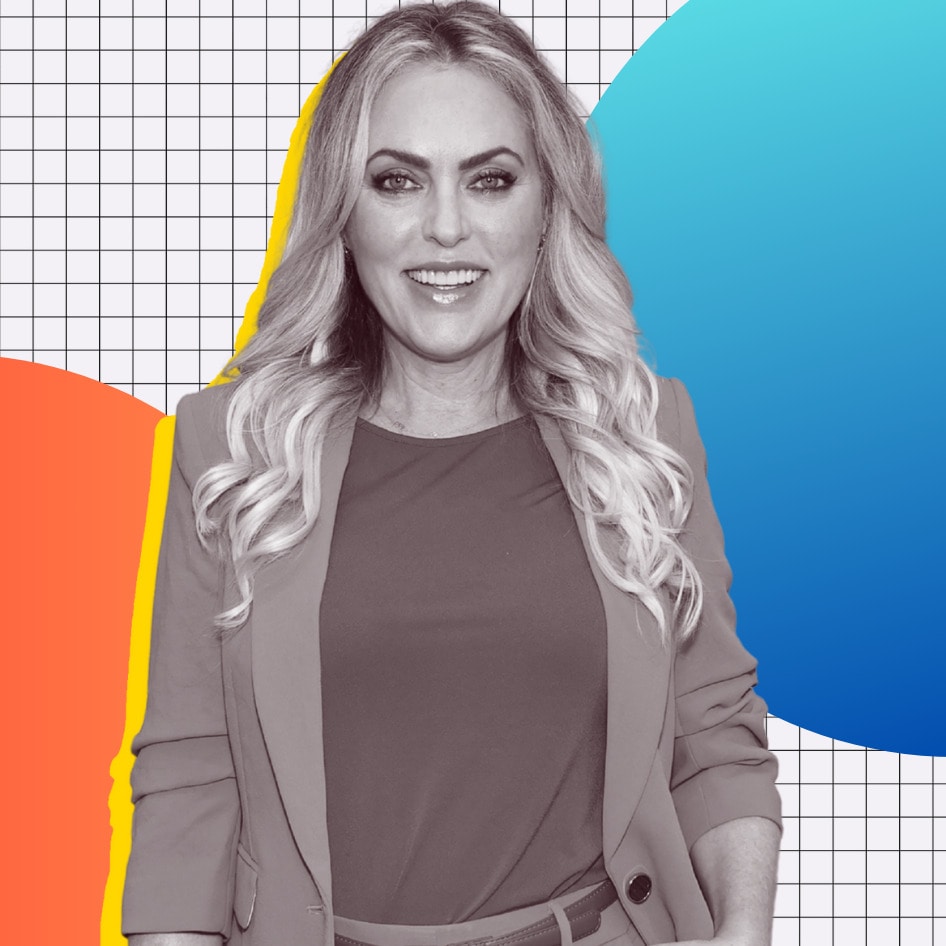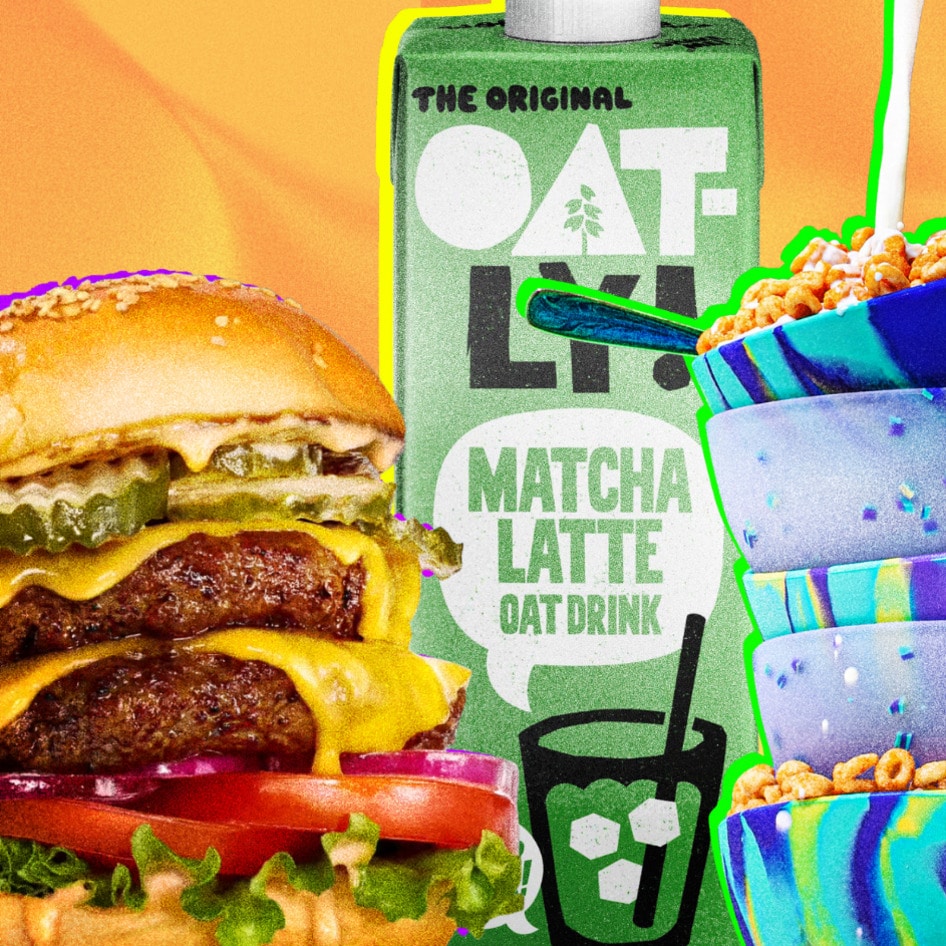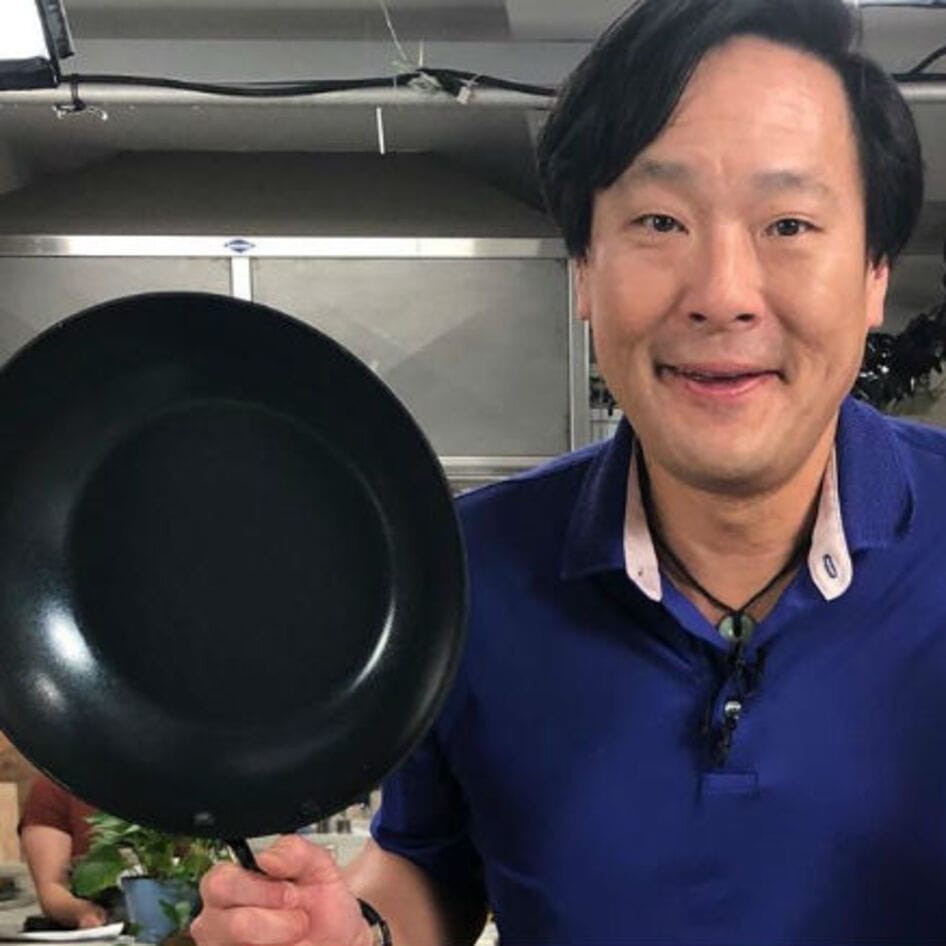My Life as an Undercover Investigator
VN talks to an undercover investigator to discover what life is like on this grueling assignment.
June 27, 2012
In the May+June 2012 issue of VegNews, law student Cody Carlson shared his experience working as an undercover investigator for Mercy For Animals. Readers were so moved by his first-hand account of the horrors of factory farming, and asked that we post the piece on VegNews.com so that Cody’s story can be told to even more people. The article is presented here in its entirety.
Hidden cameras and recorders strapped to their bodies. Knowing that one wrong word to a co-worker will result in getting busted. Watching animals live and die in the worst conditions imaginable, and being prohibited from even expressing the most basic compassion for them. Undercover investigators exist in solitude, cut off from everyone they’ve ever known, surrounded by people who often take pleasure in torturing animals, and tasked with working grueling hours in constant peril of being exposed. Why would anyone take on this lonely, horrific task? Because covert documentation of cruelty is changing the way people think about the animals who become their food—and saving animals’ lives by the hundreds of thousands.
Yet while undercover investigations are emerging as perhaps the most powerful threat to the existence of factory farming, the lives and motivations of the people who carry them out remain a mystery. These professional infiltrators have been described by many as truth-seeking journalists and compassionate activists, and by others as unscrupulous propagandists—even “animal rights terrorists.” As proposed “ag-gag” bills (state legislation that would make the documenting of factory farms without the owners’ permission illegal) threaten to further conceal the day-to-day cruelties of the industrial animal production system, it’s never been more important to understand these investigators and what it is they do. I worked undercover for two years, and this is my story.
The Beginning
I was 25 years old when I began working for Mercy For Animals. Before that, I was an analyst at a private investigation agency in midtown Manhattan, where I spent most of my day mining online databases from my cubicle. At the time, I wasn’t closely involved with the animal protection movement, though I’d been vegan since reading about factory farming in my teens. Then one day, after seeing a groundbreaking story about an MFA investigation on the news, I decided that being vegan wasn’t enough. I contacted Nathan Runkle at MFA and volunteered to conduct background research for future investigations. Instead, he asked if I would like to come on board and do investigations myself. I didn’t know what to say.
Like anyone, I loathe animal abuse, and wasn’t sure how I’d react to being confronted with it so intimately. What’s more, I knew going undercover would mean disappearing from my life in New York, indefinitely suspending a promising career, a relationship, and even family and friendships in order to live a tenuous, unglamorous and potentially dangerous secret life. But nagging at my conscience, I knew I was also being offered a unique opportunity to do some good. After all, the handful of undercover investigators already out there were fast becoming the driving force behind the growing animal protection movement. Their videos were leading more and more consumers to boycott factory farm products and move towards a humane, plant-based diet. Investigations were also swaying corporate policies and tipping the scales in favor of state ballot initiatives like California’s Proposition 2, thereby implementing much-needed farm-animal protection laws. In some cases, investigations were even getting facilities criminally prosecuted and shut down.
I thought it over for a few weeks and talked with my dad and some trusted friends. Hovering on the fence, I made a deal: I would do one investigation. If what I uncovered on that farm indicated that my concerns were misplaced, that things really weren’t as bad as I had feared, I would go back to my normal life. But if what I found confirmed my suspicions—that the kind of egregious abuse captured in previous investigations represented more than a “few bad apples”— I would set aside my plans and dedicate myself to exposing the realities of factory farming.
In the weeks that followed, I quit my job, buzzed my hair, threw my life in storage, and headed out to California to train with Pete, the prolific undercover investigator profiled in the HBO documentaries Dealing Dogs and Death on a Factory Farm. He took me around to livestock auctions, where he trained me to operate a hidden camera and showed me how to act and talk like a farmhand. When I went home, I picked up a state-of-the art hidden camera from a sympathetic military engineer in the East Village, splurged on Carhartt overalls and a toolset at K-Mart, and tuned up my pickup truck, which had been languishing in my dad’s garage since college. With a map of the region’s factory farms in my lap, I headed upstate. Before the week was over, I had landed my first job.
The First Time
I responded to an online want ad. It was for a maintenance position at the biggest dairy farm in the Northeast, Willet Dairy. I applied using my real name, Social Security number, and other vital information. I told them I knew my way around an engine and was hungry for work. After a brief interview, they offered me the job, and I began my career as a factory farmer.
As far as I knew, no one had gone undercover at a dairy farm before, and I wasn’t sure what to expect. Maybe, I thought, it wouldn’t be as bad as the undercover images I had seen of industrial egg, hog, and poultry farms. Maybe the worst factory farming cruelties hadn’t fully taken over dairy farming yet. But by the end of my first day, I’d realize how wrong I was.
Working at that “farm,” I learned that their 5,000 cows spent every day crowded in barren, manure-filled concrete barns. They were kept perpetually pregnant through artificial insemination, and routinely pumped full of antibiotics and hormones like rBST. Further, the cows were rife with swollen joint infections where their legs rubbed against the concrete, and suffered from heavy, inflamed udders. I watched everyday as more cows collapsed at four or five years of age - a fraction of their natural lifespan - and were either left to die or shipped to slaughter. As for the many calves born as a by-product of dairy production, if they didn’t freeze to death in an unattended tin shed, they were also shipped to slaughter within days of birth. These cows were being abused, neglected, and overdriven like disposable milk-producing machines.
As a maintenance worker, I mainly replaced the long steel cables that dragged v-shaped “manure scrapers” down the filthy concrete barn floors. It was hard, dangerous, and disgusting work, but my day was brightened by the cows that surrounded me to watch me work. We were each grateful for the distraction. Despite their ailments, they were affectionate, playful, and highly social.
Unfortunately, my supervisor did not think as highly of them. Phil had worked at the dairy for 20 years, and was a reservoir of sadistic anecdotes. When curious cows approached us, he often attacked them mercilessly and for no reason at all, using whatever tool happened to be in his hand. When I told management about his abuse, they laughed knowingly. “He likes to get real rough with them,” one said. “Take his anger out on them.” Despite the owners’ knowledge of the way he treated the cows, Phil was never disciplined. Unfortunately, his attacks were so spontaneous and unprovoked that I was only able to catch one on film.
After six weeks, I thought I had seen (and videotaped) all I needed and quit. Then I took my hours of video and written evidence to the local district attorney. It was accompanied by a 40-count criminal complaint prepared by MFA’s Director of Investigations and animal-protection nonprofit Compassion Over Killing’s legal counsel, accusing the farm of being in ongoing violation of New York’s animal cruelty statute. When the DA’s investigation stalled for several months, we brought the footage to Brian Ross’ team at ABC’s Nightline. They aired a damning—and award-winning—exposé of the dairy industry called, “Got Milk? Got Ethics?” that awakened millions of viewers to the urgent plight of modern dairy cows.
The ensuing public outcry pressured the DA into taking action. Phil, my supervisor, was charged and pled guilty for his single documented act of abuse. Unfortunately, the DA decided not to press charges against the facility for following “commonly accepted commercial-farming practices,” but Willett Dairy didn’t get off scot-free. Its distributor cancelled their contract, and they were pressured to stop amputating, or “docking,” their cows’ tails. A bill was also introduced by New York Assemblymember Linda Rosenthal to ban tail-docking without anesthesia.
With all these developments, it was clear that I was more useful in the field than back home. Undercover life sucked, there was no doubt about it, but at least I was good at it. And now that I had seen the truth for myself, I could either go back to my cubicle or keep telling people. I decided to stay for another case.
A Vicious Cycle
That spring, I worked at a sow farm in central Pennsylvania for two months. After that, I spent a few weeks working at a pet store, learning how to eventually talk my way into about 50 puppy mills in Oklahoma, Texas, and Kansas. The next winter, I worked at a series of battery cage egg farms around Iowa. At each location, I found the same thing: millions of animals suffering a fate worse than death.
The more I saw, the more I needed the world to recognize the weight of this injustice. I needed everyone to look into the eyes of a caged farm animal and recognize like I had that she feels the same pain, the same terror, and even the same potential joy as you or I. I watched young hiefers and piglets wrestle and prance in their small concrete and steel pens, their instinctual and immutable enthusiasm for life momentarily triumphing over their cruel environment. Once, I watched as a mother sow cleverly engineered a prison break by loosening the hinges of her crate with her tongue until the front door fell off. After escorting out her piglets, the sow immediately began to do the same for another sow’s door. My coworker told me that several sows had orchestrated such “liberations” in the past, and that these sows had to be put down.
These bittersweet moments were few and far between. Mainly, I witnessed horrific scenes like mother pigs getting beaten with metal rods to force them back into farrowing crates after getting their first chance to walk in months. I watched them roar in helpless despair as their piglets were violently yanked from their teats and castrated in front of their faces. I watched countless egg-laying hens die of thirst, starvation, or trampling after their broken legs or wings became trapped in their cages. And I watched mother cows spend days bellowing for their stolen calves as if this was the first time it had happened. For me, these memories illustrate the tragedy of the modern animal farm. You need only look to see that these intelligent animals are paying an unfathomable cost to satisfy our habit for cheap meat, eggs and dairy.
Of course, individual workers aren’t held responsible for these standard conditions. They are trained to ignore animal suffering, creating a work culture of apathy or even outright cruelty. Every facility had at least one person like Phil who tortured the animals for fun. These guys were troubled, and didn’t make much effort to hide it from their coworkers. The scarier part was that nobody tried to stop them, or did anything more then tease them for there sadistic behavior. This was strange since many of the workers claimed that they cared about the animals, and admitted that they had to “get used” to working in the barns. Some told me privately about their frequent nightmares or their chronic health problems. Most had applications on file with the other employer down the road, but for now, they were stuck here. In response, they had to become desensitized just to make it through the day.
Since I was a new employee, I figured it was all right for me to show some concern. I risked blowing my cover by complaining about cruel treatment to management at every facility, and every time, they told me it was just something I had to put up with. Eventually, I learned to just keep my mouth shut. Speaking up, I’d learn, could only get you in trouble.
Once, a co-worker at a battery egg farm confronted me about my concern for the hens who were suffering from prolapsed uteri (a condition in which the birds’ uteri are partially expelled from their bodies, and unable to be retracted). These herniated organs were getting tangled in the cages, causing an agonizingly slow death, and I had asked whether we were expected to provide veterinary care. In no uncertain terms, the worker accused me of being an undercover investigator. With my heart beating in my throat, I feigned annoyance, and told her to leave me alone and let me do my job. From then on, I only helped animals when no one was watching.
As a vegan and an animal lover, it was almost impossible to remain passive in the face of such cruelty, but that’s exactly what my job required. My code was simple: don’t do anything illegal, or anything that would otherwise compromise my credibility as a witness down the road. Otherwise, I did exactly what was expected of me. I was a model employee. As I worked, I reminded myself that this abuse was going to happen regardless of my presence, but would be documented if I stuck around by playing along. Capturing the abuse on film began to give me an adrenaline rush, and I focused on that feeling instead.
Still, the experience was draining me. I was losing weight, sleeping fitfully, and forgetting how to interact with others socially. My old life in New York had all but faded away, while my new life – a life of solitude and constant horrors – remained a secret to everyone I had left behind. It was like I no longer existed. After two years, I couldn’t do it anymore. Nathan and Pete completely understood when I told them I was through.
Getting Out
My timing ended up being perfect. A month after I retired, trade groups for the puppy mill and factory farming industries sent out bulletins to their members, warning them to be on the lookout for undercover investigators and providing them with my name and description. They had blown my cover, but MFA was one step ahead. Pete had trained a new investigator who was already working in the field. In the following months, as new investigations continued to mount, industry groups realized they would need more than a post-hoc response.
In the fall of 2010, four states introduced bills that would make undercover investigations illegal. In some cases, these bills attached liability not just to investigators, but ostensibly to anyone who shared their video on Facebook or Twitter. Ag-friendly legislators offered an array of outlandish justifications—everything from protecting food safety to preventing trespassing meth addicts from stealing anhydrous ammonia—but their real intent was obvious. In each state, the bills were drafted and lobbied for by factory farmers with the clear expectation of silencing whistle-blowers.
Fortunately, their plan quickly backfired. Prominent media outlets rightly perceived these bills as an assault on journalistic freedoms. They took up our cause, telling millions of Americans about agribusiness’s dirty war on the truth, until all four bills ultimately stalled at the end of the legislative session. This year, seven states have re-introduced ag-gag bills. With consumers increasingly choosing cruelty-free alternatives and major reforms looming for the egg and pork sector, it seems like the ag-gag laws are animal agribusiness’s last hope to stem the tides of change. It’s just one part of an ongoing struggle to decide how much the public should know about where our food comes from, and what we should do about it.
As for me, I’ve stepped back from the front lines, but more and more people are stepping up. New investigators are continuing to give a platform to the 9 billion animals suffering on America’s factory farms. I’m proud to count a few of them as my friends, and can testify that they are some of the kindest, bravest, and most dedicated folks I’ve ever met. No one is better equipped for the challenges they are certain to face. I hope you’ll support them by sharing their videos every way you can, helping out groups like Mercy For Animals, the HSUS, and Compassion Over Killing, contacting your representatives when called upon, and of course, by continuing to boycott animal agribusiness. In return, they’ll keep working tirelessly to hold agribusiness accountable, one “bad apple” at a time.
A Day in the Life: 24 Hours as an Investigator
Here’s what a single day working as an undercover investigator entailed while Cody worked at Country View Family Farms in Middletown, PA.
5am Woke up, got dressed in my street clothes, and set up my wire. Drove to the Sheetz gas station to pick up a coffee and a newspaper, and took my first covert recording of the day: a quick shot of the paper’s front page, which serves to time stamp the day’s footage.
6am Pulled into the driveway and punched in to work. Took a shower to “decontaminate” myself from the outside world and put on a sanitized uniform. I scooped out rations of corn and soy meal to about 100 sows in the farrowing barns. As my job required, I used this time to prod the sows to get them to stand up, so that they do not become lame from lying in one place all day.
7am Administered shots of tetracycline and other steroids to several dozen sows and pigs that were flagged as sick. Removed all the piglets that died since yesterday, and marked the cause of death on the daily tally. Most were “laid ons”—they had been crushed under their immobilized mothers.
8am Watched my co-workers tail-dock and castrate about 300 newborn piglets. I injected each pig with iron so that the wounds do not become infected. My co-workers never changed their blades, so that by the end they were jagged and dull. A couple of the pigs immediately ruptured—their organs spilled out of the incision—and they were carried by one leg to the “death cart” to be gassed.
9am Joined my supervisor to walk along the farrowing barns and identify young pigs that weren’t growing fast enough. She bumped some back into younger age groups to give them a few more weeks to grow. Others she simply threw in the “death cart,” a mobile bin that suffocates pigs with CO2. It’s supposed to take a few minutes, but took closer to 10 since she put so many pigs inside. “It’s incredibly cruel,” she told me, “but it’s how we’re told to do it.”
10am Administered antibiotics to hundreds of young pigs that had been afflicted with “scours” (extreme diarrhea).
11am Lunch break. I ate a Clif Bar and a sandwich with lettuce, tomato, and vegetarian deli meat while we talked about animal-rights groups and speculated which one of us might be working undercover. When it was my turn to be accused, I admitted it and everyone laughed.
12pm Returned to the barns with a co-worker who was carrying a bolt gun. One of the sows in Farrowing had been suffering from a prolapsed uterus for several weeks. Country View does not treat prolapses, so we were told to wait until she had finally finished nursing her young and then euthanize her. By now, the prolapse had turned black and smelled terrible. For the third time this week, it took him more than one bolt to kill the poor sow, causing our supervisor to dub him “Two-Shot Jimmy.”
1pm Volunteered to go help the Gestation Barn workers tattoo ID numbers on the sows. Watched as they battered the sows with spiked mallets dipped in green ink. When my turn came, I pretended I was intimidated by the way the sows were bucking and went back to farrowing, where I gave the sows their feed.
2pm Like every day, everyone converged in the Gestation Barn at the end of the day to perform artificial insemination. Today, about 150 sows were inseminated. Then I “showered out” and punched out.
3pm While driving home, called my supervisor at MFA to let him know I’m okay and brief him about the day’s events.
4pm Got back to my motel room, took off my wire, and showered for a third time that day while the day’s footage uploaded to my laptop. Took some time to chill out, have a beer, and watch the news on TV.
5pm Watched all of the day’s footage and wrote a log explaining what was happening on screen, then wrote a narrative entry in my journal describing the day’s events. These are to assist MFA and law enforcement in understanding the context of the video footage.
8pm Went out for dinner, table for one at the local taqueria. An acquaintance from my basketball league sat down next to me and began talking about music and politics, but when conversation turned to work, I excused myself and went home.
10pm Charged my video equipment and packed a lunch, set the alarm, and went to bed.
Cody Carlson is currently in his second year at Brooklyn Law School, where he is on Law Review. He got an A+ in Animal Rights Law.
Mercy For Animals is currently seeking investigators. If you are interested in learning more or are interested in applying, visit the Mercy For Animals investigator page.
JUMP TO ... Latest News | Recipes | Guides | Health | Subscribe







